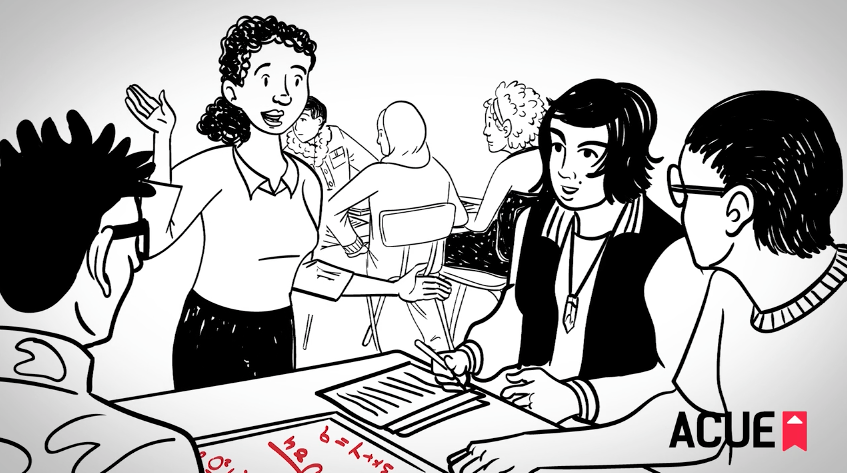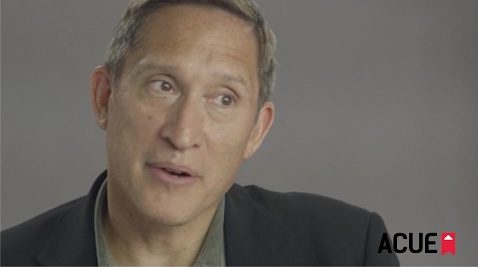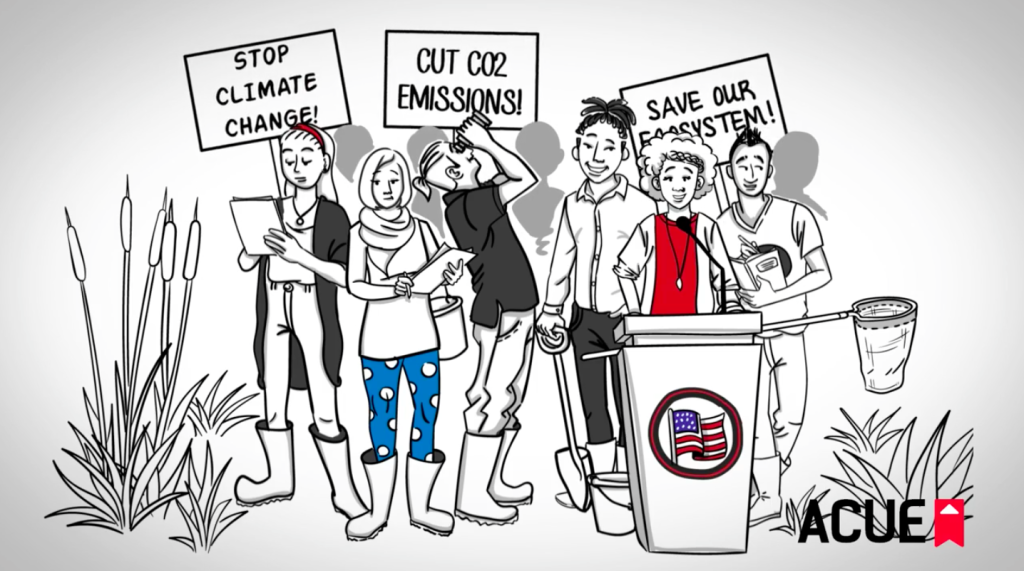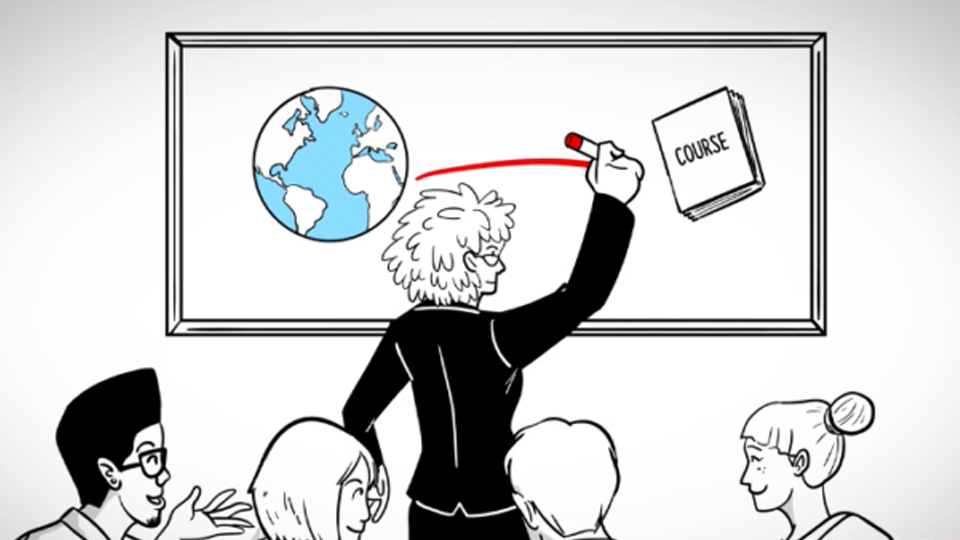
News Roundup: Teaching STEM
This week, read how some colleges and universities are encouraging their STEM instructors to improve instruction.
| Sign up for The ‘Q’ Newsletter for top news weekly insights. |
Feedback matters. José Bowen, president of Goucher College, reveals why faculty should use student feedback and take risks to improve their teaching. (The ‘Q’ Blog)
Evolving STEM. A new report from the Association of American Universities and the Research Corporation for Science Advancement highlights ways some colleges are encouraging STEM instructors to improve their instruction, such as involving freshmen in real-world research. (Campus Technology)
Spotlighting community colleges. Betsy DeVos touted community colleges as key to economic growth in her first higher education speech since becoming education secretary. (Associated Press)
Gut reactions. To encourage feedback, George Williams asks students to write questions and comments on note cards anonymously at the end of every class and posts them with responses on his course website. (ProfHacker)
Pedagogical pathways. Colleges and universities need to adopt high-impact teaching strategies that enhance student engagement and motivation to “get more Americans to academic and professional success,” writes Steve Mintz. (Higher Ed Gamma)
Motivating minds. Instructors can take a number of small steps to boost motivation in the classroom, such as playing energizing music at the start of class, Bonni Stachowiak writes. (Teaching in Higher Ed)
Quality control. Some online course developers ask volunteers to provide feedback on lectures and quizzes to work out kinks before the courses go live. (EdSurge)
Learning climate. A sociology professor observes that the controversial political climate drives students to engage more deeply with coursework and draw connections to their lives, citing examples from disciplines like cognitive psychology and economics. (Inside Higher Ed)
Teaching about trailblazers.James Ewers Jr. encourages instructors to teach students about the accomplishments of African Americans to continue to stimulate change. (Diverse: Issues in Education)
Pearls of wisdom. Instructors responding to a survey about the state of higher education around the world offer teaching advice to colleagues, which includes establishing clear expectations for coursework. (Times Higher Education)
Embracing technology. EDUCAUSE released a list of 16 issues the higher education community should address concerning the role of technology, which includes emphasizing information literacy. (EdScoop)
Data at risk. Two University of Washington professors are launching a course with a colorfully worded title that aims to teach students to think critically about issues with big data and machine learning. (Recode)
How José Bowen Promotes Great Teaching

José Bowen: Using Feedback From Students to Improve Your Teaching
José Bowen, president of Goucher College, says encouraging his college instructors to take risks is crucial to promote a culture of teaching on campus.
“The first time you try a group activity, students are going to hate it and you’re probably not very good at it yet anyway,” Dr. Bowen tells ACUE in this month’s Expert Series. “So how do we create systems where we encourage people to make mistakes, allow them to fail, learn, and try again?”
Dr. Bowen also explains how instructors can use student feedback to improve their teaching, a topic he discusses in depth as a subject matter expert for ACUE’s Course in Effective Teaching Practices. Read and watch our interview with Dr. Bowen, then share your questions and comments below.
How have you personally seen the impact of effective teaching on students?
JB: Years after I had left Georgetown, a student once wrote to me and said that he was now doing a jazz radio show. It had been a dozen years and it was a big class, so I didn’t remember this student much from class. But for me, it was a reminder that the first thing that matters to students is your engagement, your love of your subject.
Video: Why ‘falling in love’ is a learning outcome in José Bowen’s classes.
| Prepare and credential college educators in effective instruction. Contact ACUE to learn more. |
In the ACUE module on Using Student Achievement and Feedback to Improve Your Teaching, you describe the importance of transparency. Why is that important?
JB: When it comes to student evaluations, it’s never easy to read criticism—and students are going to be critical. I tell faculty to remember the source. It’s generally not personal, although it feels that way.
But if something resonates, and you’re going to try something new in response, then give students credit. If you give students credit, you’re giving them agency. You’re saying, “I read what you wrote; it matters to me.” This is important. Students want to know that their feedback matters in the same way that you want to know that your feedback matters. When students have taken the time to give us feedback, at least acknowledge it in some way, even if you can’t address all of it at once. Students are going to be more receptive to what you’re trying if you credit students with being the source of the change.
Then you can check in a week later. Did it help? Did it make a difference? It’s a way to give students agency and show that you care—and we know from the research that students want you to care about their learning.
Video: What you’re really telling students by admitting you’re wrong.
How have you made effective teaching part of your student success plans at Goucher?
JB: At Goucher, we’ve created a new center for the advancement of teaching. There is a mechanism for supporting faculty, there are experts, and there are opportunities to learn.
But you also have to encourage faculty to take risks. When you try a new way to engage with students in the classroom, you’re probably not going to succeed the first time. The first time you try a group activity, students are going to hate it and you’re probably not very good at it yet anyway. So how do we create systems where we encourage people to make mistakes, allow them to fail, learn, and try again? To me the most important aspect is allowing for failure, predicting failure, and making that part of the process.
Video: Good pedagogy starts with understanding what matters to your students.
| For more expert insights, visit ACUE’s Expert Series page. |
What’s something that you recently learned about teaching and learning that excited you?
JB: I’m very excited by the research about students’ willingness to get help to do better. Now, it shouldn’t be a surprise to hear that students will have a harder time if they’re not willing to get help. But last year the National Survey of Student Engagement found that one in five first-year students had difficulty in getting help. It’s not that they were physically unable to get help. It’s mostly that they don’t understand the system. They feel nervous or there’s a stigma attached to getting help. Maybe the office hours didn’t correspond to their work schedule. So the idea that the students who aren’t getting help are at a serious disadvantage, I think, is a pretty powerful one that should immediately change how we try to help first- and second-year students.
Video: The delicate combination of high standards and nurturing.
Dr. Bowen is featured in ACUE’s Course in Effective Teaching Practices for modules on Engaging Underprepared Students; Embracing Diversity in Your Classroom; and Using Student Achievement and Feedback to Improve Your Teaching.
Dr. Bowen’s latest book, Teaching Naked Techniques: A Practical Guide to Designing Better Classes, is written with C. Edward Watson and serves as a comprehensive guide of proven quick ideas for improving learning.

News Roundup: Teaching Students to Learn From History
This week, one professor looks back in history to help students find inspiration to influence social change, and the POD Network launches a new white paper series to advance the scholarship of teaching and learning.
| News and insights delivered to your inbox every week: The ‘Q’ Newsletter |
Pedagogy in protesting.Instructors can use student activism as an opportunity to promote constructive discussions and collaboration. (Inside Higher Ed)
Academic agency. Maha Bali and Azzah Awwad suggest that instructors design assessments with student learning in mind through methods such as offering choices about the medium students use to present their work. (Al-Fanar Media)
Limiting language. Assigning “twessays”—essays in 140-character tweets—encourages students to use language economically when writing and teaches them to hone their arguments. (Hybrid Pedagogy)
Capturing classrooms. Lecture capture technology, systems that allow professors to record lectures so that students may watch them remotely, gives professors the opportunity to review and evaluate their lessons. (Campus Technology)
Military student success. Many colleges and universities are training educators on how to better understand and meet the needs of veterans. (Education Dive)
POD papers. POD Speaks, a new publication from the POD Network, will feature evidence-based papers that highlights the work educational developers. (POD Network)
Leadership pathways. ACUE Advisor Dr. Elmira Mangum, Florida A&M’s 11th president, will do a half-year research sabbatical at the Penn Center for Minority Serving Institutions and the University of Pennsylvania Graduate School of Education. (Diverse: Issues in Higher Education)
Teacher terminology. John Warner explains why the term “teacher” is central to his profession as a higher education writing instructor. (Just Visiting)
Swapping sources. Pooling notes on primary sources contributes to students’ communal learning. (ProfHacker)
Agents of social change. A women’s studies professor believes that teaching students about the history of the women’s movement and other movements helps them envision how they might contribute to the world. (Inside Higher Ed)
Transformative technology.Educators can transform lessons with new technologies—for instance, assigning a traditional essay as a blog post—but should remember that lesson design and student-teacher relationships come first. (EdTech)
Group exercises. Four approaches to forming groups for coursework include randomly selected, instructor-generated, self-selected, and mixed; each method has strengths and drawbacks that depend on the course, instructor, and students. (The Teaching Center, Washington University at St. Louis)
Teaching Students to Learn From History
Debunking Learning Myths
Teaching About Controversy

News Roundup: Scaling effective instruction
This week in higher ed news, a new tool to visualize student feedback and why relinquishing control of your classroom is key to student learning.
| Sign up for The ‘Q’ Newsletter for weekly news and insights. |
Teaching with outcomes. ACE released a paper and hosted a webinar discussing the research linking student learning and effective instruction. (ACE)
Tough conversations. Four professors offer suggestions for broaching difficult topics in the classroom, including encouraging students to view discussions as learning experiences. (IDEA)
Teaching Naked techniques. José Bowen and C. Edward Watson join Bonni Stachowiak to talk about techniques from their book Teaching Naked. (Teaching in Higher Ed — Part 1 and Part 2)
Supporting students. CUNY Chancellor James Milliken aims to improve graduation rates by streamlining shared services across campuses and increasing the number of full-time faculty. (The Wall Street Journal)
First five minutes. Here are four suggestions for grabbing students’ attention at the beginning of class, such as opening with a question. (The Chronicle of Higher Education)
ICYMI: Dr. Michael Wesch, a subject matter expert, ACUE’s Course in Effective Teaching Practices, reveals how he changed his teaching methods to engage and motivate students. (The ‘Q’ Blog)
Opening doors. Public universities are some of the best agents of social mobility for working-class people and need increased state funding to give more students opportunities, David Leonhardt writes. (The New York Times)
Evolving edits. A new tool allows students to visualize feedback and edits to papers via a video playback of changes to typed documents. (ProfHacker)
Relinquishing control. David Gooblar suggests that instructors relinquish control of the classroom to students by using active listening. (Pedagogy Unbound)
Incorporating edtech. Higher ed and technology leaders highlight 11 trends in 2017, including alternative learning spaces, artificial intelligence, and adaptive learning. (Campus Technology)
Teaching through tracking.University of Michigan Professor Timothy McKay explains how instructors can collect and use information on students’ individual goals and backgrounds to personalize their teaching. (NPRed)
Roads to tolerance. Since higher education leads to a more tolerant society by providing opportunities for debate, engagement, and openness, colleges should continue to invest resources in and promote inclusion, ACE Assistant Vice President Lorelle Espinosa says. (Higher Education Today)
